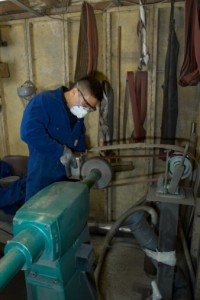 The economy is changing, and while it slowly climbs it’s way to recovery, employers are looking at the job market in a different way. Now more than ever, companies are increasingly relying on temporary staffing to fill open positions instead of dealing with the time and expense of directly hiring new employees.
The economy is changing, and while it slowly climbs it’s way to recovery, employers are looking at the job market in a different way. Now more than ever, companies are increasingly relying on temporary staffing to fill open positions instead of dealing with the time and expense of directly hiring new employees.
This is a great opportunity for job seekers to gain valuable experience, but many don’t consider it as an option because of the various misconceptions about interim work. It’s time to expose these ideas for the myths they are. Here are the top three staffing myths busted to help you find success in your career.
Temporary work doesn’t pay well and is low-level.
This isn’t the case. For staffing agencies, demand is growing fastest for administrative and commercial jobs. More and more professionals are embracing the flexibility and control they have over their work schedule and the challenge and variety they can have acting as a consultant to their various jobs.
Staffing agencies want highly skilled and talented individuals to meet the needs of their job orders. That means they offer competitive wages and benefits that are on par with those directly hired. Some staffing companies offer health insurance, vacation, and retirement options. Research your local agency to see if their services are the right fit for you and your schedule.
I can’t get a full-time job if everyone knows I’m a temporary employee.
Because of the high cost of hiring and terminating employees, companies are turning to staffing agencies to evaluate and test new hires before hiring them full time. Employers are still cautious of the economy, so it makes perfect sense to hire workers from staffing agencies as a cost effective way to meet their needs. In many cases, a staffing agency can be your foot in the door with some prominent companies.
There are several stories about temporary employees working for Express who end up in full-time positions in companies they never would have been considered for otherwise. Check out these stories of temporary employees’ success.
Having temp work on your résumé looks bad.
Showing how you have gained and developed skills will only strengthen your résumé. As staffing has grown into a bigger part of the economy, experience in temporary work is seen as the equivalent of consulting experience in some industries. Many employers see long-term staffing jobs as the same as regular work experience. There are several benefits to working with a staffing agency that will look good on a résumé as long as you can show how your experience can help potential employers.
The increase in employment through staffing has always been a sign of future economic recovery, but opportunities to work on a temporary basis are expanding. Some industry experts are predicting temporary work may become more integral to the economy in the next decade. Contact your local Express office to see if we can provide you with an opportunity to help you succeed with your career goals.






